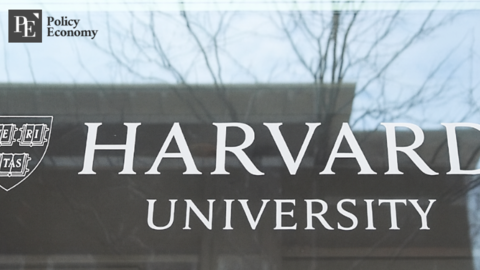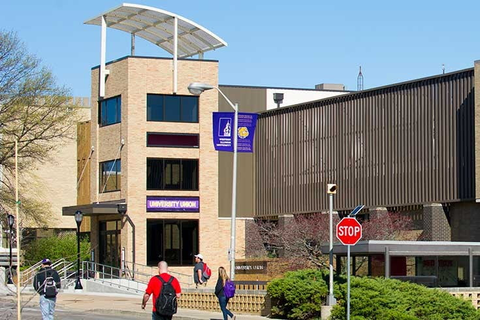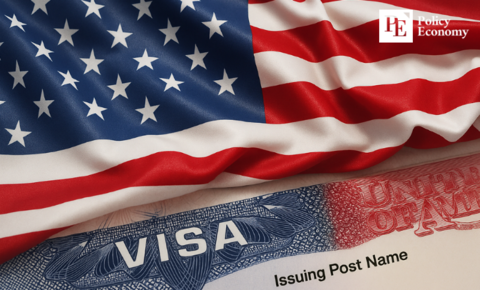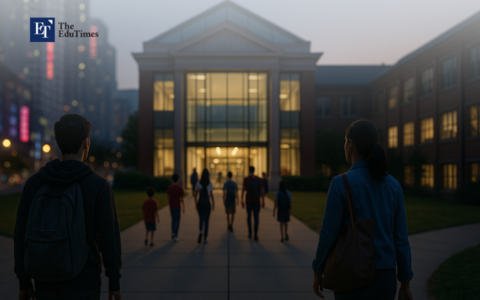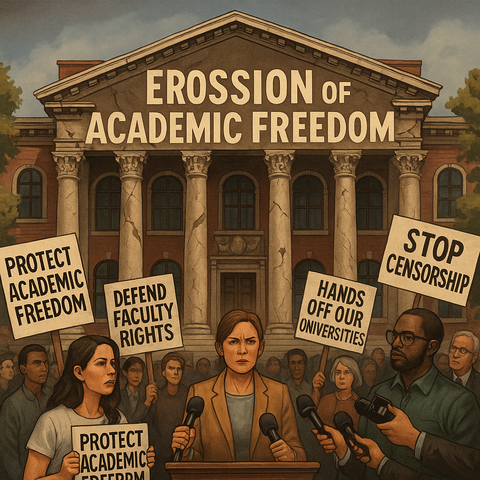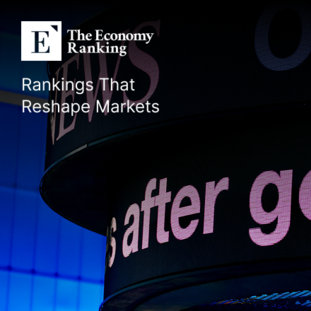Spread of Mass Shooting in the United States
Input
Modified
Brooklyn subway was turned into a “War Zone” this Tuesday, by a guy wearing a gas mask and a green reflective vest. According to law enforcement sources, the gunman hurled a smoke canister into the train car to confuse the rush-hour people before starting shooting people. Police are investigating for a person of interest in connection with a subway attack in Brooklyn that left at least 23 people wounded or injured.
A person close to the inquiry mentioned that his weapon may have been jammed, sparing more deaths. Fortunately, there were no injuries that were considered life-threatening. At an NYPD conference conducted by Commissioner Keechant Sewell on Tuesday evening, officials named 62-year-old Frank R. James as a person of interest in the inquiry and published a photo of him.
In the United States, mass shootings are disturbingly common. In comparison to other Western countries, the United States has much more shootings, which some attribute to the country's loose gun control legislation. According to data from the US Centers for Disease Control and Prevention, there were 19,384 gun-related murders in 2020. (CDC) Figures supplied by the NYPD announced that more than 360 individuals have been shot this year in 322 shooting incidents, an increase of nearly 9% and 8% over last year, respectively.
[caption id="attachment_1559" align="alignnone" width="1360"] Death due to gun violence continue to rise since 2014 Photo: The Trace[/caption]
Shooting that happens in the United States is not only limited to public shootings. The Shooting that happened on April 16, 2007, a senior(Seung-Hui Cho) at Virginia Tech in Blacksburg, Virginia, opened fire in a residence hall and classrooms on campus, killing 32 people and injuring dozens before committing suicide. This incident led the Department of Education to charge Virginia Tech $32,500 for violating the Clery Act, which requires colleges and universities to give timely notification of campus safety information.
Another disaster happened on October 1, 2015. Ten individuals were killed and seven others were injured in a shooting at Umpqua Community College in Roseburg, Oregon. After the gunfire with authorities, shooter Christopher Harper-Mercer, 26, committed suicide. Governor Kate Brown expressed her sadness at the incident and said she will head to Roseburg right away. The American Association of Community Colleges and the Association of Community College Trustees released a joint statement condemning the massacre and pledging their commitment to on-campus safety. These tragic data directly connect to applicants who obviously want a safer school to study.
The shooting incidents reignited the debate over gun violence and resulted in important gun regulation revisions. It prompted reforms in school safety, like campus-wide emergency bulletins and threat assessment teams, which are now standard practice on college campuses. Alongside schools reforming school safety rules, it should be noted that behavioral threat assessment should become the gold standard for avoiding violence in schools, universities, and workplaces, as well as against government and other public authorities.
However, even with these safety regulations in colleges, school shootings led college applicants to check if the school that they are applying to is considered a "Safty" school. According to Statista, a German company specializing in market and consumer data, California had the most mass shootings in the United States, with 23 total shootings since 1982.
[caption id="attachment_1552" align="alignnone" width="12098"]
Death due to gun violence continue to rise since 2014 Photo: The Trace[/caption]
Shooting that happens in the United States is not only limited to public shootings. The Shooting that happened on April 16, 2007, a senior(Seung-Hui Cho) at Virginia Tech in Blacksburg, Virginia, opened fire in a residence hall and classrooms on campus, killing 32 people and injuring dozens before committing suicide. This incident led the Department of Education to charge Virginia Tech $32,500 for violating the Clery Act, which requires colleges and universities to give timely notification of campus safety information.
Another disaster happened on October 1, 2015. Ten individuals were killed and seven others were injured in a shooting at Umpqua Community College in Roseburg, Oregon. After the gunfire with authorities, shooter Christopher Harper-Mercer, 26, committed suicide. Governor Kate Brown expressed her sadness at the incident and said she will head to Roseburg right away. The American Association of Community Colleges and the Association of Community College Trustees released a joint statement condemning the massacre and pledging their commitment to on-campus safety. These tragic data directly connect to applicants who obviously want a safer school to study.
The shooting incidents reignited the debate over gun violence and resulted in important gun regulation revisions. It prompted reforms in school safety, like campus-wide emergency bulletins and threat assessment teams, which are now standard practice on college campuses. Alongside schools reforming school safety rules, it should be noted that behavioral threat assessment should become the gold standard for avoiding violence in schools, universities, and workplaces, as well as against government and other public authorities.
However, even with these safety regulations in colleges, school shootings led college applicants to check if the school that they are applying to is considered a "Safty" school. According to Statista, a German company specializing in market and consumer data, California had the most mass shootings in the United States, with 23 total shootings since 1982.
[caption id="attachment_1552" align="alignnone" width="12098"] The right to possess a weapon is incorporated in the United States Constitution, and gun control regulations in the United States are state-based.[/caption]
The Violence Project database announced that a campus shooter is often a non-white guy who is a current student at the institution and has a history of violence and early trauma. The shooter is suicidal, uses legally bought weapons, and frequently leaves a manifesto or video detailing his crime. All of the college gunmen had a history of mental illness and were suicidal and Seventy-eight percent experienced childhood trauma and had a criminal record.
Active Shooting Statistics in School
According to studies conducted by the Department of Homeland Security, an active shooter situation at a school lasts an average of 12.5 minutes. Law enforcement, on the other hand, has an average response time of 18 minutes.
The right to possess a weapon is incorporated in the United States Constitution, and gun control regulations in the United States are state-based.[/caption]
The Violence Project database announced that a campus shooter is often a non-white guy who is a current student at the institution and has a history of violence and early trauma. The shooter is suicidal, uses legally bought weapons, and frequently leaves a manifesto or video detailing his crime. All of the college gunmen had a history of mental illness and were suicidal and Seventy-eight percent experienced childhood trauma and had a criminal record.
Active Shooting Statistics in School
According to studies conducted by the Department of Homeland Security, an active shooter situation at a school lasts an average of 12.5 minutes. Law enforcement, on the other hand, has an average response time of 18 minutes.
 Death due to gun violence continue to rise since 2014 Photo: The Trace[/caption]
Shooting that happens in the United States is not only limited to public shootings. The Shooting that happened on April 16, 2007, a senior(Seung-Hui Cho) at Virginia Tech in Blacksburg, Virginia, opened fire in a residence hall and classrooms on campus, killing 32 people and injuring dozens before committing suicide. This incident led the Department of Education to charge Virginia Tech $32,500 for violating the Clery Act, which requires colleges and universities to give timely notification of campus safety information.
Another disaster happened on October 1, 2015. Ten individuals were killed and seven others were injured in a shooting at Umpqua Community College in Roseburg, Oregon. After the gunfire with authorities, shooter Christopher Harper-Mercer, 26, committed suicide. Governor Kate Brown expressed her sadness at the incident and said she will head to Roseburg right away. The American Association of Community Colleges and the Association of Community College Trustees released a joint statement condemning the massacre and pledging their commitment to on-campus safety. These tragic data directly connect to applicants who obviously want a safer school to study.
The shooting incidents reignited the debate over gun violence and resulted in important gun regulation revisions. It prompted reforms in school safety, like campus-wide emergency bulletins and threat assessment teams, which are now standard practice on college campuses. Alongside schools reforming school safety rules, it should be noted that behavioral threat assessment should become the gold standard for avoiding violence in schools, universities, and workplaces, as well as against government and other public authorities.
However, even with these safety regulations in colleges, school shootings led college applicants to check if the school that they are applying to is considered a "Safty" school. According to Statista, a German company specializing in market and consumer data, California had the most mass shootings in the United States, with 23 total shootings since 1982.
[caption id="attachment_1552" align="alignnone" width="12098"]
Death due to gun violence continue to rise since 2014 Photo: The Trace[/caption]
Shooting that happens in the United States is not only limited to public shootings. The Shooting that happened on April 16, 2007, a senior(Seung-Hui Cho) at Virginia Tech in Blacksburg, Virginia, opened fire in a residence hall and classrooms on campus, killing 32 people and injuring dozens before committing suicide. This incident led the Department of Education to charge Virginia Tech $32,500 for violating the Clery Act, which requires colleges and universities to give timely notification of campus safety information.
Another disaster happened on October 1, 2015. Ten individuals were killed and seven others were injured in a shooting at Umpqua Community College in Roseburg, Oregon. After the gunfire with authorities, shooter Christopher Harper-Mercer, 26, committed suicide. Governor Kate Brown expressed her sadness at the incident and said she will head to Roseburg right away. The American Association of Community Colleges and the Association of Community College Trustees released a joint statement condemning the massacre and pledging their commitment to on-campus safety. These tragic data directly connect to applicants who obviously want a safer school to study.
The shooting incidents reignited the debate over gun violence and resulted in important gun regulation revisions. It prompted reforms in school safety, like campus-wide emergency bulletins and threat assessment teams, which are now standard practice on college campuses. Alongside schools reforming school safety rules, it should be noted that behavioral threat assessment should become the gold standard for avoiding violence in schools, universities, and workplaces, as well as against government and other public authorities.
However, even with these safety regulations in colleges, school shootings led college applicants to check if the school that they are applying to is considered a "Safty" school. According to Statista, a German company specializing in market and consumer data, California had the most mass shootings in the United States, with 23 total shootings since 1982.
[caption id="attachment_1552" align="alignnone" width="12098"] The right to possess a weapon is incorporated in the United States Constitution, and gun control regulations in the United States are state-based.[/caption]
The Violence Project database announced that a campus shooter is often a non-white guy who is a current student at the institution and has a history of violence and early trauma. The shooter is suicidal, uses legally bought weapons, and frequently leaves a manifesto or video detailing his crime. All of the college gunmen had a history of mental illness and were suicidal and Seventy-eight percent experienced childhood trauma and had a criminal record.
Active Shooting Statistics in School
According to studies conducted by the Department of Homeland Security, an active shooter situation at a school lasts an average of 12.5 minutes. Law enforcement, on the other hand, has an average response time of 18 minutes.
The right to possess a weapon is incorporated in the United States Constitution, and gun control regulations in the United States are state-based.[/caption]
The Violence Project database announced that a campus shooter is often a non-white guy who is a current student at the institution and has a history of violence and early trauma. The shooter is suicidal, uses legally bought weapons, and frequently leaves a manifesto or video detailing his crime. All of the college gunmen had a history of mental illness and were suicidal and Seventy-eight percent experienced childhood trauma and had a criminal record.
Active Shooting Statistics in School
According to studies conducted by the Department of Homeland Security, an active shooter situation at a school lasts an average of 12.5 minutes. Law enforcement, on the other hand, has an average response time of 18 minutes.
- Mass killings occur between 20 and 30 times each year on average, with around one of those incidents taking place at a school.
- Increasing school security procedures and policies may cause more harm than good.
- Since 1996, there have been 16 school shootings with multiple victims, or occurrences involving four or more victims and at least 2 deaths by firearms, not including the assailant.



